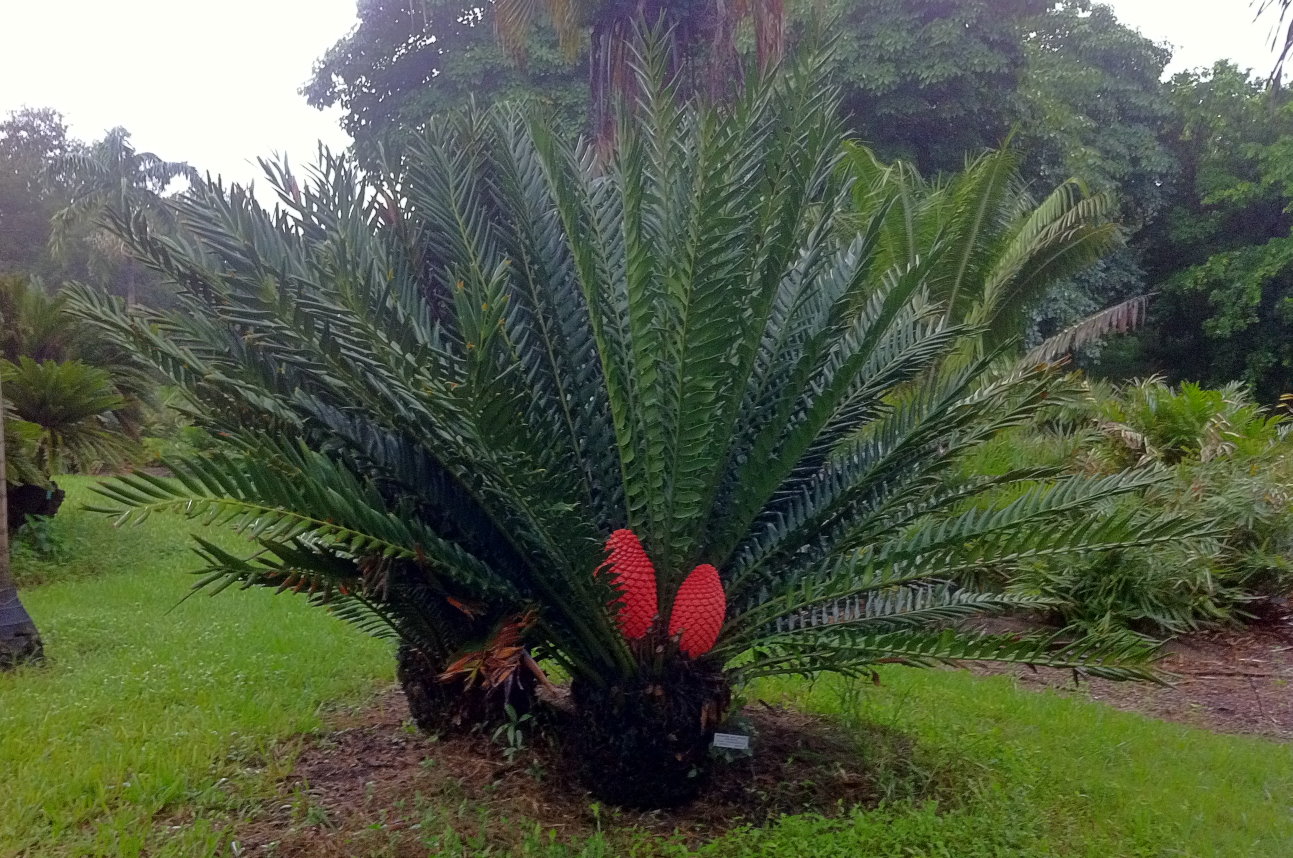Ferocious Cycad
It has been wet, wetter and wettest in Miami the past week, and there seems to be no end to this interminable rain! It rains and rains every day, and night and the next day, and the next night... ad infinitum. I braved the rain and was rewarded by this amazing sight, two incandescent cones. You can see how wet the ground is. The rain just stopped temporarily after a heavy downpour... and these two cones shine like two gems. This is an Encephalartos ferox, a very popular cycad since it can be grown fairly easily as long as there is plenty of water, well-drained soil, and moderate temperatures. All these conditions are met here. Plenty of water is an understatement.
E. ferox, a member of the family Zamiaceae, is a small cycad with about 35 cm wide subterranean trunk. It gets its name from the Latin word ferocious, likely from the spine-tipped lobes on the leaves of the plant. Trust me, you don't want to touch them. It is found naturally on the south-eastern coast of Africa where it has been used by local people for its starch content. It is considered to be one of the most popular cultivated cycads. E. ferox is found along the southern coast of Mozambique and in northern Natal and can be found very close to the ocean on white beach sand, often growing near other vegetation on the sand dunes. It is also found in evergreen forests. This one was collected from Mozambique, where this species was first described in 1851.
This species reproduces using cones that are of a dark salmon color. These are female cones, and I am not sure if I can be lucky enough to find one with male cones this time around... but the male guys offer a sight and size to be reckoned with. While the female cones are about 25 to 50 cm long, 20 to 25 cm wide, and sessile (having no stalk or peduncle,) the male cone is a 40 to 50 cm long cylinder that is 7 to 10 cm wide with a peduncle that is up to 2 to 3 cm long. They look really formidable! Now you know that these cones are sexually dimorphic! I am in a good mood, so I am not going to leave you aghast, wondering what the heck that is. Sexual dimorphism is a phenotypic difference between males and females of the same species, especially in ornamentation and coloration. Excellent examples are difference between peacocks and peahens; and many spiders species displaying typical sexual dimorphism differences where the male is dramatically smaller than the female. If you think deeper, human species tends to exaggerate its natural sexual dimorphism and plastic surgeons can't wait to oblige!
Rain, rain... would you please stop coming down? My shoes and I can't take this anymore!



No comments:
Post a Comment